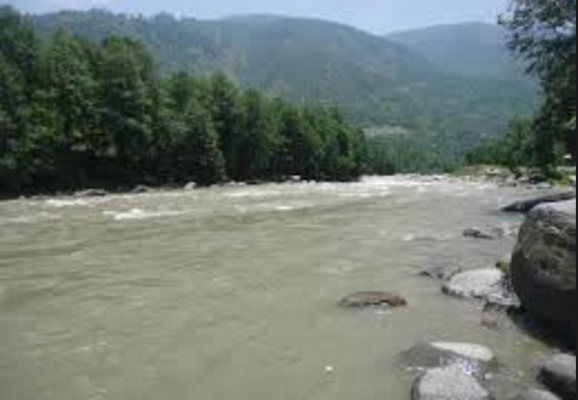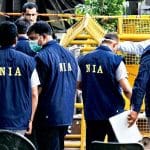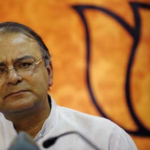Satluj-Yamuna Link Canal-SYL canal Issue
A brief background and chronology of the SYL canal issue
- It is a proposed 214-kilometer long canal in India to connect the Sutlej and Yamuna rivers.
- The dispute began after Punjab was reorganised on October 31, 1966, and the state of Haryana was created.
- While most resources were divided at that time, the sharing of river water was left for decision to a later date.
- Punjab was opposed to sharing waters of the Ravi and Beas with Haryana, citing river sharing principles, and contending that it had no water to spare.
- At an inter-state meeting arranged by the union government in 1955, the total calculated flow of water of the Ravi and Beas – 15.85 million acre feet (MAF) – had been divided among Rajasthan (8 MAF), undivided Punjab (7.20 MAF) and Jammu and Kashmir (0.65 MAF).
- In March 1976, the union government allocated Haryana 3.5 MAF out of undivided Punjab’s 7.2 MAF, a decade after the Punjab Reorganisation Act was implemented, and even as Punjab continued to protest.
- To enable Haryana to use its share of the waters of the Sutlej and its tributary Beas, a canal linking the Sutlej with the Yamuna, cutting across the state, was considered.
- In 1981, union government under Indira Gandhi had negotiated a tripartite agreement between Punjab, Haryana and Rajasthan.
- In April 1982, Prime Minister Indira Gandhi ceremonially dug the ground at Kapoori village in Patiala district for the construction of the 214-km Sutlej-Yamuna Link (or SYL) canal, 122 km of which was to be in Punjab, and 92 km in Haryana.
- In July 1985, Prime Minister Rajiv Gandhi and Akali Dal president HS Longowal signed the Punjab Accord, agreeing that a tribunal would verify the claims of both Punjab and Haryana on river waters.
- Punjab was roiled by militancy, and many Akali leaders were opposed to the deal. Longowal was assassinated in less than a month of signing the accord.
- In September 1985 Punjab come out from nearly two years of President’s Rule and work began on building the canal but the opposition never died.
- In 1990, a chief engineer and his assistant were killed by militants apparently to protest the construction; 30 labourers working at a project had been killed earlier. As the turmoil escalated, Punjab stopped work.
- In November 1990, Haryana took up the matter with Delhi, and asked that the work be taken over by a central agency.
- After failing to make headway, it moved the Supreme Court in 1996, seeking directions to Punjab to complete the work on the SYL.
- In 2002, and again in June 2004, the court directed Punjab to complete the work in its area.
- But within a month of the Supreme Court order, on July 12, 2004, the Punjab Assembly passed The Punjab Termination of Agreements Act, 2004, terminating its water-sharing agreements, and thus imperil the construction of SYL in Punjab.
Haryana view’s
- When Haryana was carved out of Punjab along with Himachal Pradesh 50 years ago it was decided that state will be able to enjoy riparian rights but successive Punjab governments have refused to share water.
- Haryana would benefit enormously by gaining water from Ravi-Beas from the riparian state of Punjab.
- The 212km-long SYL canal was to carry Haryana’s share of water to its “dry and arid” southern part.
- While 121km of the canal was to run through Punjab, the remaining 91km through Haryana, which completed the work in June 1980.
- Around ₹250 crore were spent on the canal system. Haryana also gave ₹1 crore to Punjab in November 1976, the first instalment of the ₹192 crore it would give the neighbour over the years for building the canal. However, Punjab did not start the work.
Latest Developments, SC’s verdict and the aftermath
- The case already pending in the Supreme Court and eight months ago, the SAD-BJP government passed another law to return the land acquired on its side for the Sutlej Yamuna link (SYL) canal, to its owners.
- The Supreme Court on 10th November 2016 declared its final verdict against Punjab government’s order of quashing water sharing agreement with Haryana.
- The court ruled that the legislations passed by Punjab government on Sutlej Yamuna Link (SYL) canal dispute stand null and void as a bilateral agreement cannot be tampered with by one party alone.
- The court answered in negative all the questions raised before it through presidential reference under Article 143 of the Constitution, stating that the Punjab water Law is unconstitutional.
- Following the court order, the Centre will take over the canal and continue the construction work on it.
- The SAD-BJP alliance cleared that the party would study all the legal options available instead of resorting to drama like the Congress.
- Punjab government, on the other hand, has maintained a cautious line, stating that a cabinet meeting will be held in which the government will review the court order and then convey its stand.
- Haryana, on the other hand, has welcomed the Supreme Court order.
- The Centre had said it was not taking sides and was maintaining a neutral stand in the matter in which the court has recorded the stand of other states — Rajasthan, Himachal Pradesh, Delhi and Jammu and Kashmir.
- On 11 November 2016, all Indian National Congress MLAs of the Punjab Legislative Assembly resigned in protest at the Supreme Court’s decision that the state’s termination of the link canal was unconstitutional. They have announced they will attend a rally against the canal.
सतलुज-यमुना लिंक नहर मुद्दा (SYL canal issue)
एक संक्षिप्त पृष्ठभूमि और एसवाईएल नहर के मुद्दे के कालक्रम
- भारत में सतलुज और यमुना नदियों को जोड़ने के लिए यह एक प्रस्तावित 214 किलोमीटर लंबी नहर है।
- 31 अक्टूबर, 1966 को पंजाब के पुनर्गठित होने के बाद और हरियाणा के राज्य बनने के बाद ही विवाद शुरू हो गया।
- अधिकतर संसाधनों को उसी समय विभाजित किया गया था जबकि नदी के पानी के बंटवारे को बाद में फैसले के लिए छोड़ दिया गया था।
- पंजाब रावी और ब्यास के जल का हरियाणा के साथ बंटवारे के खिलाफ था, नदी के बंटवारे के सिद्धांतों का हवाला देकर यह दलील दी कि हमारे पास अतिरिक्त पानी नहीं है ।
- 1955 में केंद्र सरकार द्वारा आयोजित अंतर-राज्यो की एक बैठक में रावी और ब्यास के पानी के प्रवाह की कुल गणना- 15.85 मिलियन एकड़ फीट (एमएएफ) को राज्यो के मध्य विभाजित किया गया – राजस्थान (8 एम.ए.एफ.), अविभाजित पंजाब (7.20 एम.ए.एफ.) और जम्मू-कश्मीर (0.65 एम.ए.एफ.)।
- मार्च 1976 में, केन्द्र सरकार ने अविभाजित पंजाब के 7.2 एम.ए.एफ. से हरियाणा को 3.5 एम.ए.एफ. आवंटित कर दिया, यह अधिनियम पंजाब पुनर्गठन के एक दशक बाद लागू किया गया था, और इसका पंजाब ने विरोध जारी रखा ।
- सतलुज और इसकी सहायक नदी ब्यास के पानी का हरियाणा के अपने हिस्से के उपयोग के अधिकार के लिए एक नहर यमुना के साथ सतलुज को जोड़ते हुए राज्य भर में कटाव के लिए मानी गयी था।
- 1981 में इंदिरा गांधी के नेतृत्व में केंद्र सरकार ने पंजाब, हरियाणा और राजस्थान के बीच एक त्रिपक्षीय समझौते पर बातचीत की थी।
- अप्रैल 1982 में प्रधानमंत्री इंदिरा गांधी ने 214 किलोमीटर सतलुज-यमुना लिंक (या एसवाईएल) नहर के निर्माण के लिए पटियाला जिले के कपूरी गांव में समारोहपूर्वक जमीन को खोदा था। जिसका 122 किलोमीटर पंजाब में और 92 किमी हरियाणा में था।
- जुलाई 1985 में, प्रधानमंत्री राजीव गांधी और अकाली दल के अध्यक्ष एच एस लोंगोवाल ने इसबात पर सहमत होते हुए पंजाब समझौते पर हस्ताक्षर किया कि एक न्यायाधिकरण नदी जल पर पंजाब और हरियाणा दोनों के दावों को सत्यापित करेगा।
- पंजाब आतंक से खिजला गया था और कई अकाली नेता इस समझौते का विरोध कर रहे थे। लोंगोवाल की समझौते पर हस्ताक्षर करने के एक महीने से भी कम समय में हत्या कर दी गई।
- सितंबर 1985 में पंजाब लगभग दो साल के राष्ट्रपति शासन से बाहर आ गया और नहर का निर्माण शुरू हो गया लेकिन विरोध कभी समाप्त नहीं हुआ।
- 1990 में, एक मुख्य इंजीनियर और उनके सहायक उन आतंकवादियों द्वारा मारे गए जो जाहिर तौर पर निर्माण के विरोध में थे और एक परियोजना पर काम कर रहे 30 मजदूरों को पहले मारा गया। जिससे उथल-पुथल बढ़ने से पंजाब ने काम बंद कर दिया।
- नवंबर 1990 में, हरियाणा ने दिल्ली के साथ इस मामले को उठाया और इस काम को एक केंद्रीय एजेंसी द्वारा करवाने की बात कही।
- प्रगति में नाकाम रहने के बाद 1996 में सुप्रीम कोर्ट का दरवाजा खटखटाया और एसवाईएल पर काम पूरा करने के लिए पंजाब को निर्देश देने की मांग की।
- 2002 में, और फिर जून 2004 में, अदालत ने पंजाब को अपने क्षेत्र में काम पूरा करने के लिए निर्देश दिया।
- लेकिन सुप्रीम कोर्ट के आदेश के एक महीने के भीतर ही 12 जुलाई, 2004 को पंजाब विधानसभा ने इसके जल बंटवारे के समझौतों को समाप्त कर “पंजाब समझौता समापन अधिनियम 2004” पारित कर दिया और इस तरह से पंजाब में एसवाईएल के निर्माण को संकट में डाल दिया।
हरियाणा का दृश्य
- 50 साल पहले पंजाब से हरियाणा के साथ-साथ हिमाचल प्रदेश जब अलग हुआ था तब यह निर्णय लिया गया कि नदी तट के अधिकारो का आनंद लेने के लिए सभी राज्य सक्षम हो जायंगे लेकिन पंजाब सरकार पानी साझा करने से लगातार मना कर रही थी।
- पंजाब नदी तट राज्य से रावी-व्यास का पानी प्राप्त करके हरियाणा को अत्यन्त लाभ होगा।
- हरियाणा के हिस्से के पानी को उसके दक्षिणी भाग के सूखे और बंजर भागो तक ले जाने के लिए 212km लंबी एसवाईएल प्रस्तावित था।
- नहर के 121km पंजाब के माध्यम से शेष 91km हरियाणा के माध्यम से कार्य शुरू करने के लिए किया गया था,जिसका काम जून 1980 में पूरा कर लिया गया था ।
- नहर प्रणाली पर लगभग 250 करोड़ खर्च किए गए थे। हरियाणा ने भी नवंबर 1976 में पंजाब को ₹ 1 करोड़ दिये थे, ₹ 192 करोड़ रुपये की पहली किस्त इस नहर के निर्माण के लिए पिछले कुछ वर्षों में पड़ोसी राज्य को देना था हालांकि, पंजाब ने काम ही शुरू नहीं किया।
नवीनतम घटनाये, सुप्रीम कोर्ट के फैसले और परिणाम
- मामला पहले से ही सुप्रीम कोर्ट में लंबित है और आठ महीने पहले ही शिरोमणि अकाली दल-भाजपा सरकार ने सतलुज यमुना लिंक (एसवाईएल) नहर के अपने तरफ के हासिल किये गये भूमि को उसके मालिकों को लौटाने के लिए एक और कानून पारित कर दिया।
- 10 नवंबर 2016 को सुप्रीम कोर्ट ने हरियाणा के साथ पानी के बंटवारे के समझौते को खारिज करने के पंजाब सरकार के आदेश के खिलाफ अपने अंतिम फैसले की घोषणा की।
- अदालत ने यह फैसला सुनाया कि सतलुज यमुना लिंक (एसवाईएल) नहर विवाद पर पंजाब सरकार द्वारा पारित कानून अशक्त और एक द्विपक्षीय समझौते रूप में यह शून्य है और अकेले एक पक्ष द्वारा इसके साथ कोई छेड़छाड़ नहीं किया जा सकता है।
- अदालत ने नकारात्मक रूप से जवाब में कहा कि संविधान के अनुच्छेद 143 के तहत राष्ट्रपति के संदर्भ के माध्यम से पहले उठाये गये सभी सवाल “पंजाब के पानी कानून” को असंवैधानिक विनिर्दिष्ट करते है।
- अदालत के आदेश के बाद केंद्र नहर को कब्जे में लेकर उस पर निर्माण कार्य जारी रखेगा।
- शिरोमणि अकाली दल-भाजपा गठबंधन ने यह साफ़ किया है कांग्रेस की तरह नाटक का सहारा लेने की बजाय पार्टी सभी उपलब्ध कानूनी विकल्पों का अध्ययन करेगी ।
- पंजाब सरकार ने दूसरी तरफ एक सतर्क स्थिति बनाए रखा है तथा मुद्दे को देखते हुए बताया कि ,एक मंत्रिमंडल की बैठक आयोजित किया जाएगा जिसमे सरकार अदालत के आदेश की समीक्षा करेगी और उसके बाद अपना रुख व्यक्त करेंगी।
- दूसरी ओर हरियाणा ने सुप्रीम कोर्ट के आदेश का स्वागत किया है।
- केंद्र सरकार ने कहा कि वह किसी का पक्ष नहीं ले रहा था और जिस मामले में अदालत ने राजस्थान, हिमाचल प्रदेश, दिल्ली और जम्मू-कश्मीर राज्यों के रुख को दर्ज किया है उसमे अपने निष्पक्ष रुख को बनाए रखा है।
- सुप्रीम कोर्ट के लिंक नहर के लिए राज्य के अवसान का निर्णय असंवैधानिक था उसी के विरोध में 11 नवंबर 2016 को भारतीय राष्ट्रीय कांग्रेस के पंजाब विधान सभा के विधायको ने इस्तीफा दे दिया।उन्होंने इस नहर के खिलाफ एक रैली में भाग लेंने की घोषणा भी की है।











